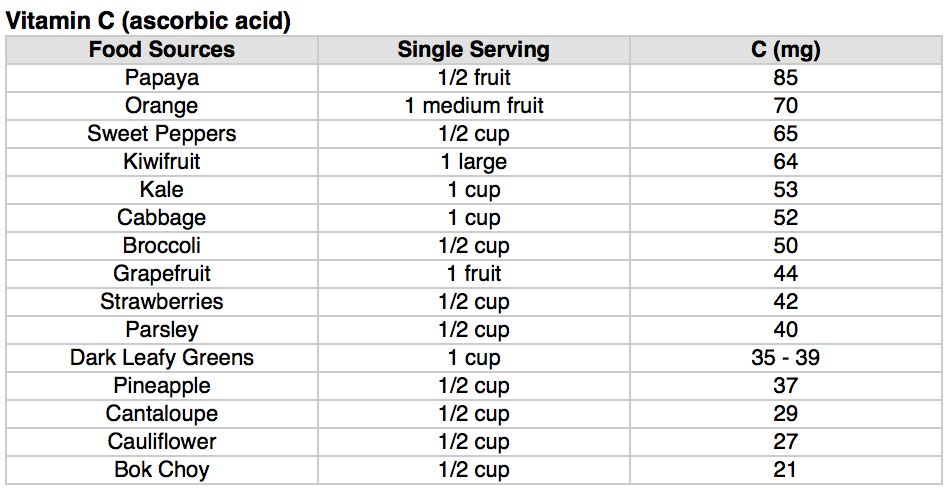Vitamin C Health Benefits and Food Sources
Through looking at an essential nutrients role in health and its characteristics of deficiency, one can come to appreciate its value in good nutrition.
Vitamin C Role in Health
Vitamin C is essential for the absorption of iron and for the growth and repair of tissues in all parts of the body. It helps the body make collagen a protein used to make skin, cartilage, tendons, ligaments, blood cells, teeth and bones.
Vitamin C is a powerful antioxidant that strengthens the immune system and helps fight infection. It is needed for healing wounds as well as for blocking the damage of free radicals, substances that damage DNA. A build up of free radicals can contribute to the aging process as well in the development of serious health conditions like cancer, heart disease and arthritis. Vitamin C is water-soluble which means it does not store in the body and must be replenished regularly.
Characteristics of Vitamin C Deficiency
A vitamin C deficiency can be characterized by dry splitting hair, gingivitis and bleeding gums, rough skin, easy bruising and nosebleeds; and a decreased ability to ward off infections and a reduced wound-healing rate. A severe deficiency is known as scurvy.
A deficiency in vitamin C can occur with cigarette smokers as it lowers the amount of vitamin C absorbed by the body. Low levels of vitamin C has also been associated with health conditions such as high blood pressure, gall bladder disease, stroke, cancer and atherosclerosis.
Vitamin C Food Sources
Excellent sources for vitamin C include citrus fruits, dark leafy greens and cruciferous vegetables.
Nutrient-Rich Whole Food Sources for Vitamin C

This chart lists the best food sources for vitamin C, along with that food source’s single serving size and the amount of vitamin C in that single serving.
The amount of nutrients per serving in the following food sources is not absolute for several reasons. Fresh foods will have a higher vitamin and mineral content when grown in healthier soil, as well vitamin content will deplete a little bit every day from the moment it is harvested. Therefore, these figures should only be used as a generalization.
Vitamin C Daily Intake Recommendations for Child and Adult

These figures are referenced from the Dietary Reference Intake (DRI) 2005 system; used in Canada and the United States. The DRI system provides the minimum daily intake requirements of vitamins, minerals and nutrients for child and adult; males and females.
Written by: J. Marshall from http://nutritionalhealingrecipes.com